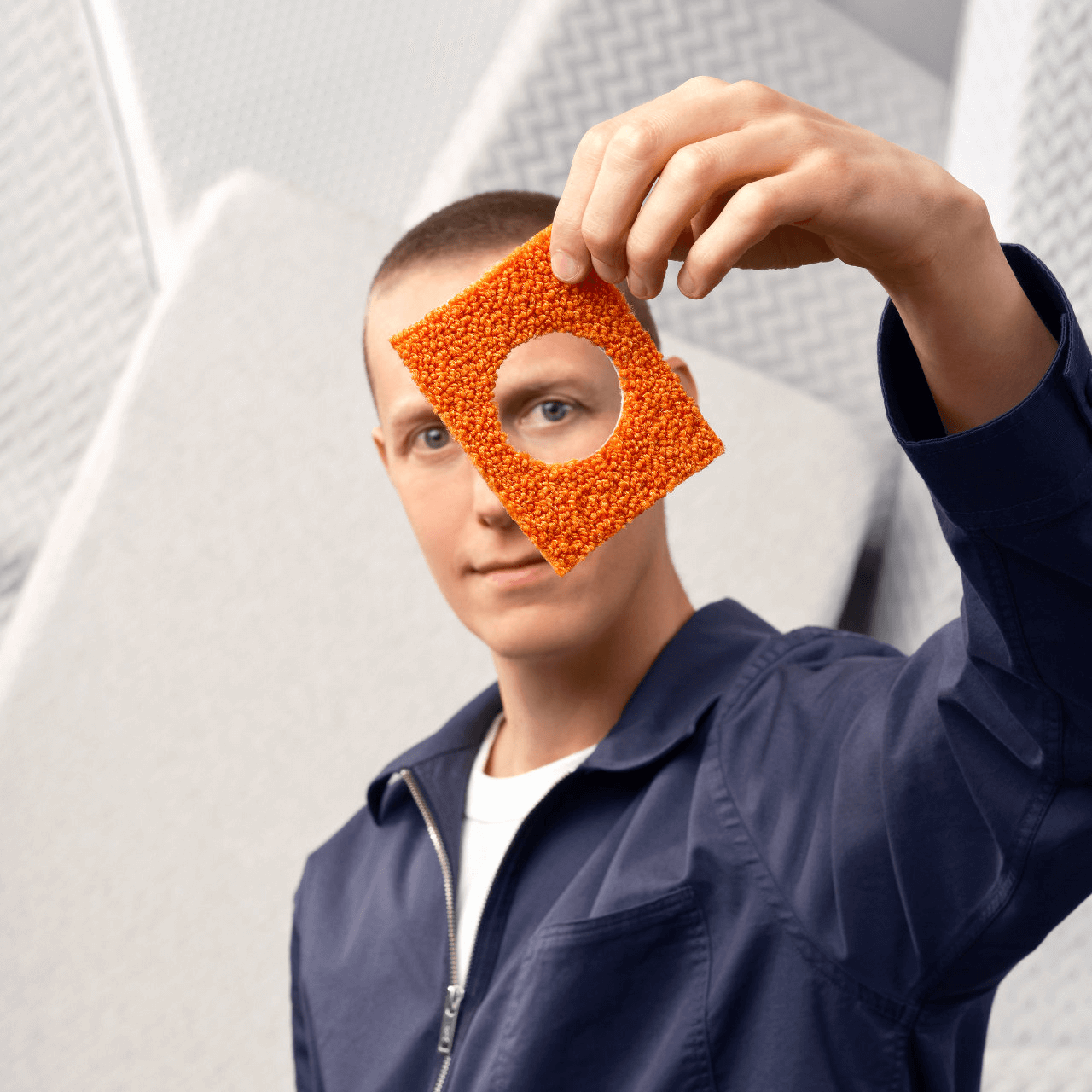We're better together
How we collaborate

Stories
To be able to truly protect the value of materials we need to know – down to the very last detail – what materials are made of.
In Lesson 3 we explained how moving to circular requires redesigning products from scratch. Doing so also means we need to re-evaluate the way we use and perceive materials. In fact, we need to search for materials that are clean (and that we can keep clean), so that they can be reused or recycled at end of use.
Getting to grips with what we don’t knowThe fact is that even the tiniest traces of certain ingredients or additives can stand in the way of reuse of recycling. Take, for instance, tiny traces of cotton that were found in polyester that our partner Auping wanted to use for mattresses. During material analysis, we discovered this obstacle to recycling. Whereas cotton, as such, is a material fit for reuse or recycling, when it ends up in polyester mesh it obstructs the mechanical recycling process. So, we went back to the supplier of the polyester mesh, who was unaware that there were traces of cotton in their polyester. Armed with this new insight, they took up the challenge and, in collaboration with their supplier, eradicated any cotton contamination. |

|
This insight made it clear to us that identifying the composition of a product’s materials and ingredients requires a deep knowledge of materials’ chemical composition and physical properties, and calls for thorough testing and strong collaboration in the value chain. Any ‘unknowns’ must become ‘knowns’: so that nothing stands in the way of circularity, and materials can be used again and again, not trashed.
The snag was, however, that on our road to circular, we learned that materials are often made up of more or different ingredients than is presumed by suppliers, manufacturers or recyclers. As a result, Material Safety Data Sheets can be incorrect or incomplete. This lack of transparency in the value chain means that ‘unknown’ – and possibly wrong – ingredients could enter and pollute material streams. Using the wrong materials will negatively impact the possibility for reuse, and with it the value of materials.
Reason why we started working together closely with suppliers to the carpet and mattress industry to help them make pure polyester fit for circularity. For instance, together with partner Object Carpet, we helped suppliers design out carbon black. This ingredient is traditionally used in carpet backing (giving its distinctive black colour), but clogs up polyester recycling machines. By designing out carbon black, polyester carpet backing is now fully recyclable into same quality polyester.

|
“‘We not only had to explain why certain ingredients stand in the way of recycling. We also ended up sitting at the table with manufacturers, their suppliers, the suppliers’ suppliers and recyclers. To get a product redesign ‘just right’ for repair, reuse and recycling, you need to collaborate. Only then can you fully leverage the combined materials’ expertise of suppliers, manufacturers’ application insights, as well as the processing knowledge of recyclers.” “We look forward to expanding our partnerships with industry peers and the supply chain. Sharing knowledge is crucial to achieving any circular economy ambitions.” |